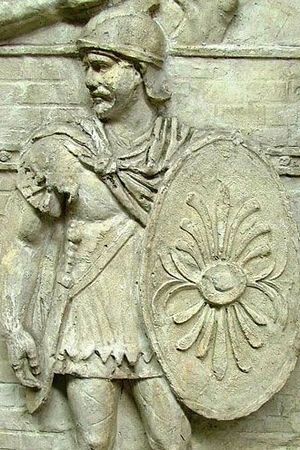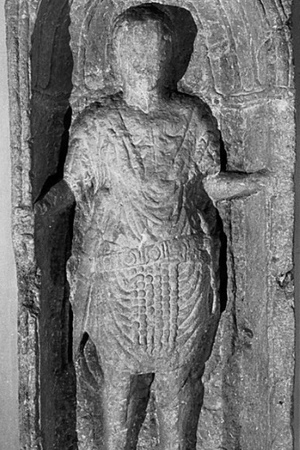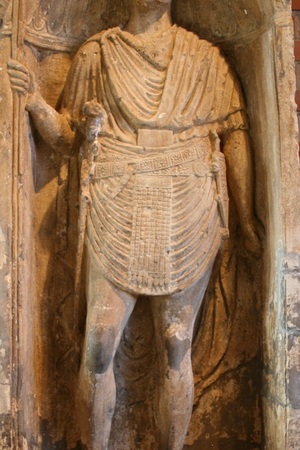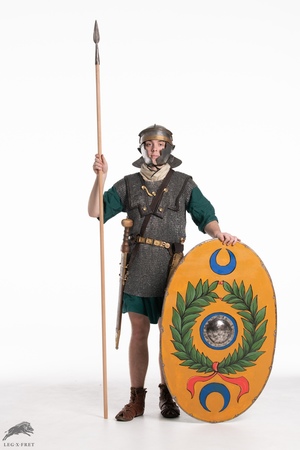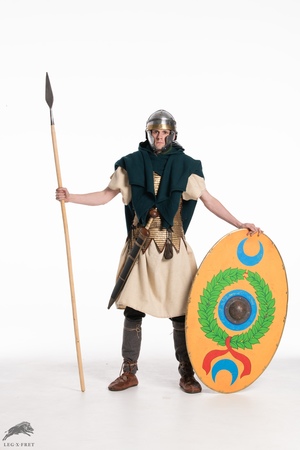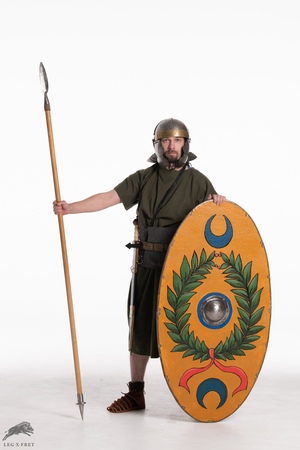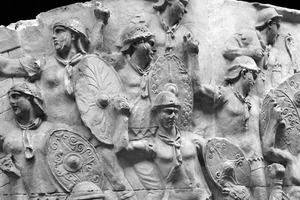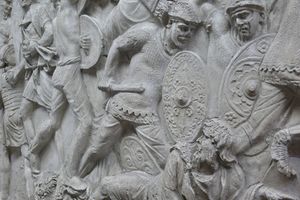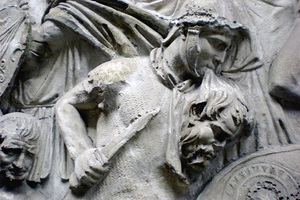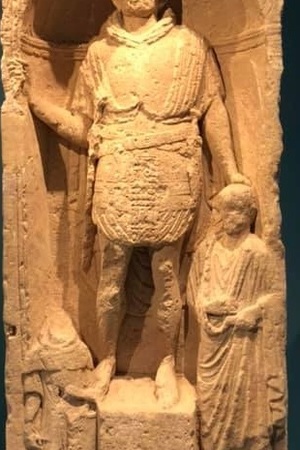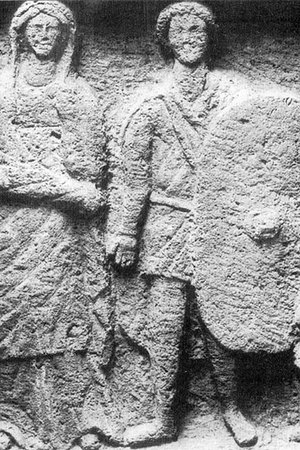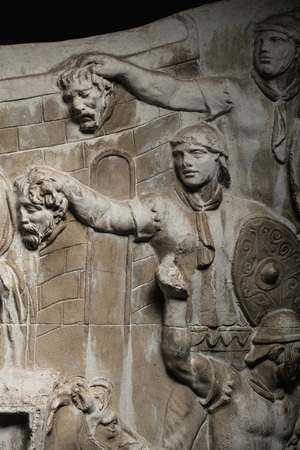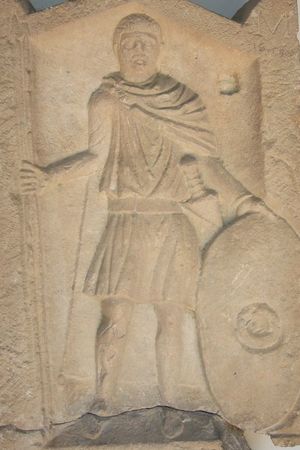Auxilary-hastat
Auxilia (Latin auxilia) - a warrior of the auxiliary units of the ancient Roman army, recruited from non-citizens of Rome: vassal and allied peoples, as well as foreign mercenaries. One of the most common types of auxiliary troops were spearmen armed with a spear (gastum) and a small shield (clipeus).
In addition to spearmen, there were several types of auxiliaries, including light cavalry, archers, and slingers. What united them primarily was their common origin. Unlike legionaries, they were recruited from subject peoples who were not Roman citizens and therefore did not enjoy the rights of Roman citizens. Recruitment was partly through hiring and partly through compulsory conscription from dependent peoples. These warriors did not belong to the regular composition of legions but formed separate units called "auxilia", the size and organization of which could vary considerably. The length of service, after which an auxiliar could acquire Roman citizenship rights, reached 25 years. Auxiliary units were replenished, as a rule, in the provinces where they were stationed. There is a considerable amount of information available about auxiliaries. Numerous visual and written sources have been preserved.
Equipment
The equipment of an auxiliary spearmen during the 1st-2nd century AD could consist of the following items:
Fabric/Leather Items:
Protective Equipment incorporating metal:
Weapons items:
Additional Accessories:
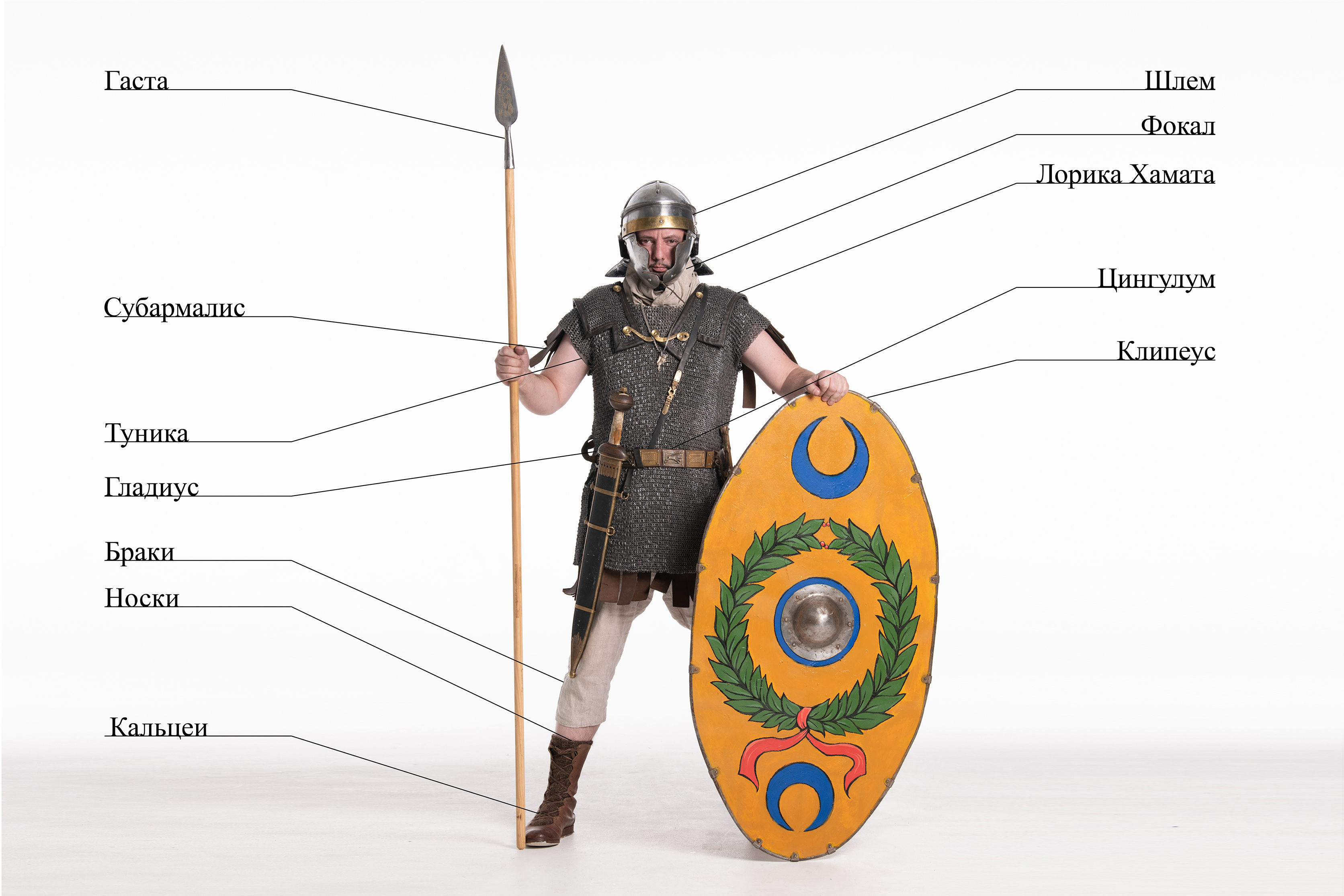
Not all equipment items were universally used. For example, according to visual sources, auxiliaries often fought without armor. Additionally, auxiliaries could be armed with lances and serve as skirmishers.
Reenactment
If we consider the most traditional portrayal of an auxiliary spearmen, it is advisable to focus on simpler helmet designs, while the hamata lorica would be the most suitable armor. The main differences between periods would lie in the choice of helmet, gladius, and pugio, which should be approached with special attention.
Creating the image should start with the basic elements of the minimal kit: a woolen tunic in green, blue, red, undyed, or gray shades, footwear (caligae/calcei), and a belt (cingulum).

 Related topics
Related topics






Auxilia, Penula, Sagum, Focale, Subarmalis, Tunic, Braccas, Subligaculum, Caligae, Calceus, Lorica squamata, Lorica hamata, Cingulum, Gasta, Gladius, Pugio, Clipeus, Fibula, Liner, Socks, Legion, Legionnaire
Literature
The Auxilia of the Roman Imperial Army.pdf
Auxilia Moesiae Superioris.pdf
Military Encyclopedia // Edited by V. F. Novitsky et al., St. Petersburg: I. V. Sytin Publishing House, 1911-1915, vol. 3.

 Gallery
Gallery






